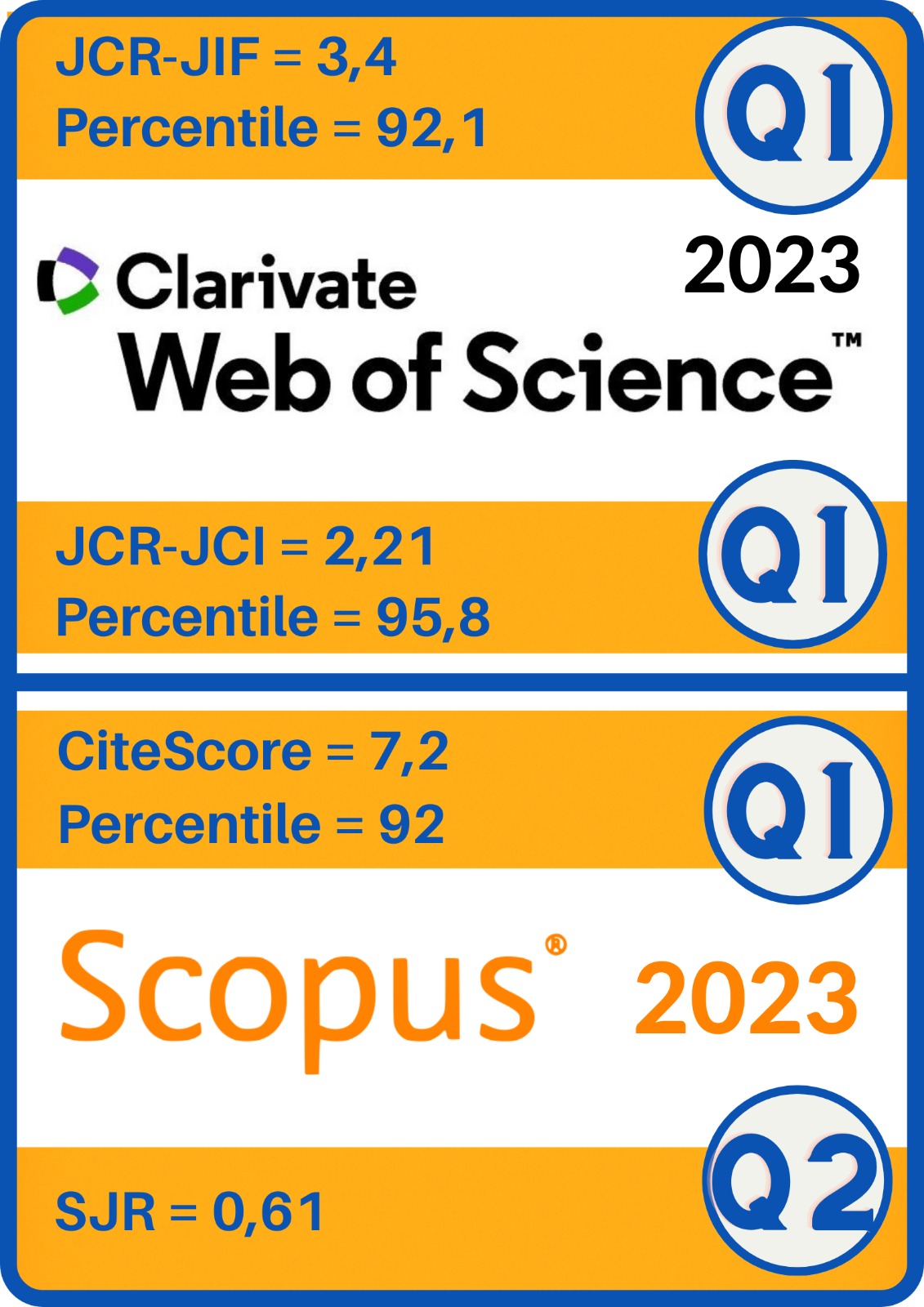Diseño de un entorno virtual de aprendizaje para promover la creatividad colaborativa en universitarios
DOI:
https://doi.org/10.5944/ried.26.2.36209Palabras clave:
creatividad, entorno virtual de aprendizaje, colaboración, investigación de diseño educativo, tecnologías digitalesResumen
La creatividad es de gran valor para la humanidad, por lo que diferentes gobiernos han buscado promoverla a través de la educación. Pese a estos esfuerzos, los modelos educativos siguen partiendo de métodos tradicionales que la obstaculizan. Es imprescindible diseñar entornos que promuevan el potencial creativo, a través del reconocimiento de las características situadas del contexto y del análisis de las perspectivas de los agentes involucrados. Con base en la investigación de diseño educativo, se configuró un entorno virtual de aprendizaje que promoviera la creatividad colaborativa en universitarios. La investigación se realizó en un curso anual de psicología educativa, en donde los estudiantes organizados en equipos desarrollaron propuestas creativas de intervención. Dicho curso se iteró con cuatro generaciones de estudiantes (n=81), en las que el prototipo del entorno virtual se diseñó, se implementó y se evaluó. La evaluación del prototipo se realizó desde dos dimensiones: 1) la creatividad percibida en las propuestas de intervención; 2) la colaboración que se suscitó en el entorno virtual de aprendizaje. Se observó que las propuestas más creativas correspondieron a las realizadas por la última generación. Así mismo, los estudiantes que más interactuaron en las herramientas digitales fueron los de la misma cohorte. Se concluye que, para promover la creatividad es importante que el entorno se caracterice por disponer de herramientas digitales familiares para el estudiante, incentive la creatividad de todos, propicie el diálogo, brinde claridad con respecto a las tareas creativas y que el profesor asesore el proceso creativo.
ARTÍCULO COMPLETO:
https://revistas.uned.es/index.php/ried/article/view/36209/27662
Descargas
Citas
Amabile, T. M. (1982). Social psychology of creativity: A consensual assessment technique. Journal of Personality and Social Psychology, 43, 997-1013. https://doi.org/10.1037/0022-3514.43.5.997
Amabile, T. M. (2017). In pursuit of everyday creativity. The Journal of Creative Behavior, 51(4), 335-337. https://doi.org/10.1002/jocb.200
Andreasen, N. C., y Ramchandran, K. (2022). Creativity in art and science: are there two cultures? Dialogues in clinical neuroscience, 14(1), 49-54. https://doi.org/10.31887/DCNS.2012.14.1/nandreasen
Baruah, J., y Paulus, P. B. (2019). Collaborative creativity and innovation in education. En C. A. Mullen (Ed.), Creativity Under Duress in Education? (pp. 155-177). Springer. https://doi.org/10.1007/978-3-319-90272-2_9
Creely, E., y Henriksen, D. (2019). Creativity and digital technologies. Encyclopedia of educational innovation, 1-6. https://doi.org/10.1007/978-981-13-2262-4_143-1
Csikszentmihalyi, M. (2015). The systems model of creativity: The collected works of Mihaly Csikszentmihalyi. Springer: USA. https://doi.org/10.1007/978-94-017-9085-7
Delgado, M., y Solano, A. (2015). Estrategias didácticas creativas en entornos virtuales para el aprendizaje. Actualidades Investigativas en Educación, 9(2), 1-21. https://doi.org/10.15517/aie.v9i2.9521
Díaz-Barriga, F. (2006). Enseñanza situada vínculo entre la escuela y la vida. McGraw-Hill. https://www.uv.mx/rmipe/files/2016/08/Ensenanza-situada-vinculo-entre-la-escuela-y-la-vida.pdf
Elisondo, R. C. (2015). La creatividad como perspectiva educativa. Cinco ideas para pensar los contextos creativos de enseñanza y aprendizaje. Actualidades investigativas en educación, 15(3), 566-588. https://doi.org/10.15517/aie.v15i3.20904
Fürst, G., y Grin, F. (2018). A comprehensive method for the measurement of everyday creativity. Thinking Skills and Creativity, 28, 84-97. https://doi.org/10.1016/j.tsc.2018.03.007
Glăveanu, V. P. (2010a). Paradigms in the study of creativity: Introducing the perspective of cultural psychology. New ideas in psychology, 28(1), 79-93. https://doi.org/10.1016/j.newideapsych.2009.07.007
Glăveanu, V. P. (2010b). Principles for a cultural psychology of creativity. Culture & Psychology, 16(2), 147-163. https://doi.org/10.1177/1354067X10361394
Guilford, J. P. (1950). Creativity. American Psychologist, 5(9), 444-454. https://doi.org/10.1037/h0063487
Helfand, M., Kaufman, J. C., y Beghetto, R. A. (2016). The Four C Model of Creativity: Culture and context. En V. P. Glăveanu (Ed.), Palgrave handbook of creativity and culture research (pp. 15-360). Palgrave. https://doi.org/10.1057/978-1-137-46344-9_2
Hernández-Torrano, D., e Ibrayeva, L. (2020). Creativity and education: A bibliometric mapping of the research literature (1975-2019). Thinking skills and creativity, 35, 100625. https://doi.org/10.1016/j.tsc.2019.100625
Hong, S. W., Lee, Y. G., y Kalay, Y. (2013, Julio). The effects of online multiuser virtual environments on creative motivation in collaborative design studios. [Ponencia]. International Conference on Human-Computer Interaction, Berlin, Alemania. https://doi.org/10.1007/978-3-642-39476-8_101
Jacobs, G. M., y Lawson, N. D. (2017). Collaboration Can Promote Students' Creativity. Online Submission. https://files.eric.ed.gov/fulltext/ED591105.pdf
Karakaya, A. F., y Demirkan, H. (2015). Collaborative digital environments to enhance the creativity of designers. Computers in Human Behavior, 42, 176-186. https://doi.org/10.1016/j.chb.2014.03.029
Kaufman, J. C., y Beghetto, R. A. (2009). Beyond big and little: The four c model of creativity. Review of general psychology, 13(1), 1-12. https://doi.org/10.1037/a0013688
Kim, K. H. (2011). The creativity crisis: The decrease in creative thinking scores on the Torrance Tests of Creative Thinking. Creativity Research Journal, 23(4), 285-295. https://doi.org/10.1080/10400419.2011.627805
Kupers, E., Lehmann-Wermser, A., McPherson, G., y van Geert, P. (2019). Children’s Creativity: A Theoretical Framework and Systematic Review. Review of Educational Research, 89(1), 93-124. https://doi.org/10.3102/0034654318815707
Kupers, E., Van Dijk, M., y Lehmann-Wermser, A. (2018). Creativity in the here and now: A generic, micro-developmental measure of creativity. Frontiers in psychology, 9, 2095. https://doi.org/10.3389/fpsyg.2018.02095
Leach, J., y Stevens, C. J. (2020). Relational creativity and improvisation in contemporary dance. Interdisciplinary Science Reviews, 45(1), 95-116. https://doi.org/10.1080/03080188.2020.1712541
Lehtonen, D., Jyrkiäinen, A., y Joutsenlahti, J. (2019). A systematic review of educational design research in Finnish doctoral dissertations on mathematics, science, and technology education. Lumat, 7(3). https://doi.org/10.31129/LUMAT.7.3.399
Loui, P. (2018). Rapid and flexible creativity in musical improvisation: review and a model. Annals of the New York Academy of Sciences, 1423(1), 138-145. https://doi.org/10.1111/nyas.13628
Luque, G. (2020). La creatividad en el sistema educativo actual de Corea del Sur. Reflexión comparada desde la filosofía de John Dewey. Estudios de Asia y África, 55(3), 459-479. https://doi.org/10.24201/eaa.v55i3.2516
McKenney, S., y Reeves, T. C. (2021). Educational design research: portraying, conducting, and enhancing productive scholarship. Medical Education, 55(1), 82-92. https://doi.org/10.1111/medu.14280
Morgan, S., y Forster, J. (1999). Creativity in the classroom. Gifted Education International, 14(1), 29-43. https://doi.org/10.1177/026142949901400105
Naciones Unidas. (2020). Resolución aprobada por la Asamblea General el 19 de diciembre de 2019. https://undocs.org/es/A/RES/74/198
Nasreen, S., Roy, A. K., y Guha, R. (2022, Julio). Exploring ‘Little-c’ Creativity Through Eye-parameters. [Ponencia]. 44th Annual International Conference of the IEEE Engineering in Medicine y Biology Society, Glasgow, Reino Unido. https://doi.org/10.1109/EMBC48229.2022.9871652
Rhodes, M. (1961). An analysis of creativity. The Phi Delta Kappan, 42(7), 305-310.
Sanz, G., y Rosso, L. M. (2016). Creatividad y educación en China. Algunas ideas sobre el debate actual. Journal of Supranational Policies of Education, 4, 177-191. https://revistas.uam.es/jospoe/article/view/5673
Sawyer, R. K. (2006). Educating for innovation. Thinking skills and creativity, 1(1), 41-48. https://doi.org/10.1016/j.tsc.2005.08.001
Sawyer, R. K. (2017a). Teaching creativity in art and design studio classes: A systematic literature review. Educational research review, 22, 99-113. https://doi.org/10.1016/j.edurev.2017.07.002
Sawyer, R. K. (2017b). Creativity research and cultural context: Past, present, and future. The Journal of Creative Behavior, 51(4), 352-354. https://doi.org/10.1002/jocb.204
Simonton, D. K. (1994). Greatness: Who makes history and why. Guilford Press.
Tang, C., Mao, S., Xing, Z., y Naumann, S. (2022). Improving student creativity through digital technology products: A literature review. Thinking Skills and Creativity, 101032. https://doi.org/10.1016/j.tsc.2022.101032
Torrance, E. P. (1972). Predictive validity of the Torrance Tests of Creative Thinking. The Journal of Creative Behavior, 6(4), 236-252. https://doi.org/10.1002/j.2162-6057.1972.tb00936.x









